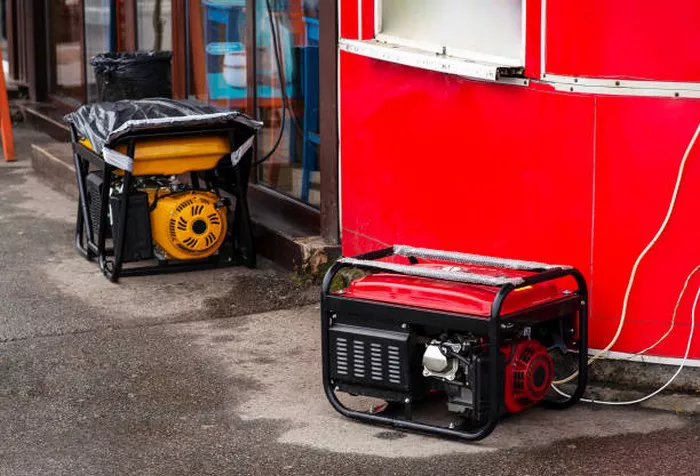In today’s world, electricity is essential for industries, businesses, and critical infrastructure. However, power outages can disrupt operations, leading to downtime and financial losses. Heavy-duty generators provide a reliable solution by supplying backup or primary power when needed. These machines are essential for applications requiring large amounts of electrical power, such as construction sites, hospitals, manufacturing plants, and data centers.
This article will explain what heavy-duty generators are, how they function, and their various applications, providing a clear understanding of their importance in different sectors.
What Are Heavy-Duty Generators?
Heavy-duty generators are large, robust power generation machines designed to produce high electrical output for industrial, commercial, and emergency applications. Unlike portable or residential generators, heavy-duty models are engineered to handle extended operation times and higher electrical loads.
Key Features of Heavy-Duty Generators:
High Power Output: Typically ranging from 50 kW to several megawatts (MW), these generators are capable of powering large industrial facilities.
Durability: Built with heavy-duty materials to withstand harsh environments and prolonged use.
Fuel Efficiency: Designed to optimize fuel consumption while delivering consistent power.
Automatic Start Systems: Many models feature automatic transfer switches (ATS) that activate the generator immediately when a power outage is detected.
Cooling Systems: Equipped with air or liquid cooling systems to prevent overheating during continuous operation.
Multiple Fuel Options: Can run on diesel, natural gas, propane, or bi-fuel systems, offering flexibility depending on availability and environmental regulations.
How Do Heavy-Duty Generators Work?
Heavy-duty generators operate based on the principles of electromagnetic induction, converting mechanical energy into electrical energy. Below is a step-by-step breakdown of their working mechanism:
1. Fuel Combustion and Engine Operation
The generator’s internal combustion engine burns fuel (diesel, natural gas, or propane) to generate mechanical energy. This engine is typically designed for high efficiency and durability, ensuring it can run continuously if needed.
2. Mechanical to Electrical Energy Conversion
The mechanical energy produced by the engine drives the alternator (also known as the generator head), which consists of a rotor and stator. When the rotor spins inside the stator, it creates an electromagnetic field, inducing an electric current.
3. Voltage Regulation
The voltage regulator ensures that the generator produces a consistent voltage level. It adjusts the excitation of the alternator to maintain a stable power output regardless of load fluctuations.
4. Cooling System Operation
As heavy-duty generators operate for long durations, they generate significant heat. To prevent overheating, they are equipped with either an air-cooling or liquid-cooling system. Liquid-cooled generators use a radiator and coolant, similar to automobile cooling systems, providing effective heat dissipation.
5. Exhaust and Emission Control
The exhaust system expels combustion byproducts and is equipped with mufflers to reduce noise. Modern heavy-duty generators also feature emission control technologies to comply with environmental regulations.
6. Power Distribution
Once electricity is generated, it is distributed through power cables to the electrical system of a building, industrial site, or infrastructure. Automatic transfer switches (ATS) ensure a seamless transition between main power and backup power during outages.
Applications of Heavy-Duty Generators
Heavy-duty generators play a vital role in numerous industries, ensuring uninterrupted operations where power supply is critical.
1. Industrial and Manufacturing Facilities
Factories and processing plants rely on consistent power to run machinery, assembly lines, and other equipment. Any interruption can result in significant losses, making generators essential.
2. Hospitals and Healthcare Facilities
Medical facilities require an uninterrupted power supply for life-support equipment, surgical tools, and essential systems. Heavy-duty generators ensure patient safety during blackouts.
3. Data Centers
Data centers house critical IT infrastructure, and power outages can cause data loss and system failures. Backup generators ensure continuous operation and prevent costly downtime.
4. Construction Sites
Remote construction projects often lack access to the electrical grid. Heavy-duty generators provide the necessary power for tools, lighting, and machinery on-site.
5. Military and Defense Operations
Military bases and field operations rely on robust generators for powering communication equipment, command centers, and other essential facilities.
6. Agriculture and Farming
Modern farms depend on electricity for irrigation systems, grain dryers, and automated equipment. Generators ensure operations continue during power disruptions.
Choosing the Right Heavy-Duty Generator
Selecting the right generator involves considering several factors:
Power Requirements: Determine the total electrical load needed, considering both peak and continuous demands.
Fuel Type: Diesel generators are common for their reliability, while natural gas models are preferred for lower emissions.
Run Time and Efficiency: Ensure the generator can operate efficiently for extended periods.
Environmental Conditions: Consider weather resistance and operating temperature ranges.
Maintenance Needs: Regular servicing is required to keep the generator in optimal condition.
Maintenance and Safety Considerations
To ensure longevity and reliability, heavy-duty generators require routine maintenance, including:
Regular Oil and Filter Changes: Prevents engine wear and maintains efficiency.
Cooling System Checks: Ensures proper heat dissipation and prevents overheating.
Battery and Electrical System Inspection: Keeps the starting mechanism in optimal condition.
Fuel System Maintenance: Prevents contamination and ensures efficient combustion.
Load Testing: Periodically testing the generator under load ensures it will function correctly during an actual outage.
Conclusion
Heavy-duty generators are an essential power solution for industrial, commercial, and emergency applications. Their ability to provide reliable electricity during outages or in remote locations makes them indispensable across various sectors. Understanding how these generators work, their applications, and maintenance requirements helps industries make informed decisions in selecting the best power solution for their needs. With proper maintenance and usage, heavy-duty generators ensure seamless operations and prevent costly disruptions.

